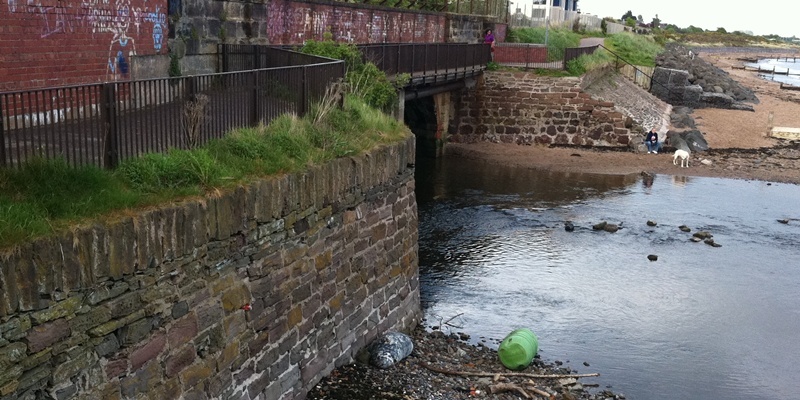A Monifieth resident has voiced her disbelief at Angus Council’s decision not to remove the decaying carcase of a grey seal from a popular beach area.
Retired Rosalind McLanders (69) says she fears the creature will become a “macabre spectacle” if it is not removed by the local authority soon.
The mammal is believed to have washed ashore towards the end of last week and has ended up on a narrow strip of land next to where the Dighty Water runs into the Tay.
The sad sight has already attracted a fair bit of attention from people using the beach and coastal path that runs just feet above.
Mrs McLanders believes the animal is a health hazard and she wants pressure put on the council to take action.
“I just don’t understand why they (the council) could leave that huge, dead seal lying there,” she said. “The Dighty is a popular place where kids paddle in the water because it is very clean, and a very beautiful spot for people to enjoy and where dogs run about. But as the seal continues to rot, it is going to become a real health risk.
“It is unbelievable that the council would choose to do nothing.”
Angus Council said this week it had no plans to remove the seal due to health and safety reasons.
The authority says the resting place is “inaccessible” and it is relying on “nature to take its course.”
Mrs McLanders added, “Where it lies is right on the border between Angus and Dundee councils,” she said. I think Angus Council are hoping a huge tide sweeps the seal away towards Dundee so it will be their responsibility.”
Meanwhile, at the Scottish Agricultural College (SAC), a flood of calls have been received from Angus residents.
The organisation, funded through Defra and Marine Scotland, investigates marine animal deaths. But Bob Reid, Scottish strandings co-ordinator at SAC, said he took the decision not to remove the Angus seal, adding that they are unable to remove every dead animal on Scotland’s coastline.
He did add, however, that it is “unusual” for a council to leave a carcase in such a place.
“It will have potentially harmful bacteria which, if it comes into contact with a human, could be damaging,” he said.
“I am surprised that the authority hasn’t moved it or buried it or done anything. But I don’t know all the details, so it may be the case that they cannot reach it.”
